- 8
- 14
from the description:
this video demonstrates a lateral tarsal strip procedure in a patient with lower eye lid ectropion.
surgery location: on-board the orbis flying eye hospital, hue, vietnam
surgeon: timothy james mcculley, wilmer eye institute, usa
- 10
- 36
Broken Male Genital Repairing Surgery, also known as Penile Fracture Repair Surgery, is a surgical procedure used to repair a broken penis. The surgery typically involves making an incision on the side of the penis to access the broken tissue and then suturing the broken pieces of tissue back together. The surgery may also involve the use of a graft to help support the repaired tissue and promote healing. Recovery time can vary depending on the severity of the injury, but it typically takes several weeks for the penis to fully heal.
- 2
- 14
An eye web is a noncancerous, triangular growth that may occur on one or both eyes. It's more common in people who spend a lot of time in the sun, such as those who work outdoors.
The painless growth may be slightly raised and contain obvious blood vessels. It may cause irritation and possibly affect vision.
Treatment usually isn't necessary. Eyedrops or surgery may help in severe cases.
- 3
- 27
from the description:
Video describes how a total thyroid removal is performed along with possible complications. Specifically discussed are recurrent laryngeal nerve damage causing permanent hoarseness as well as parathyroid gland damage leading to calcium regulation problems in the body.
For more information on thyroid surgery: https://www.fauquierent.net/thyroidmass.htm
Video produced by Dr. Chris Chang: https://www.FauquierENT.net
- 19
- 67
Skin jiggers, also known as chigoe fleas or sand fleas, are small parasitic insects that burrow into the skin, typically on the feet and legs. They are common in tropical and subtropical regions and can cause severe itching, inflammation, and infection. They can be treated with topical medications, but preventing infection by avoiding contact with the fleas is the best approach.
- 2
- 21
from the description:
this 59-year old patient had a history of long standing exotropia with limited horizontal movements of the eye. it’s unclear if she had it from birth but probably had it from her early childhood. dr. wagner maximally recessed the lateral rectus muscle and resected the medial rectus muscle. he performed the surgery in both eyes but only one eye surgery is demonstrated here.
surgeon: dr. rudolph wagner, rutgers – new jersey medical school, newark, nj, usa
- 9
- 30
BACKGROUND:
Clubfoot occurs in approximately one in 1000 live births and is one of the most common congenital birth defects. Although there have been several reports of successful treatment of idiopathic clubfoot with the Ponseti method, the use of this method for the treatment of other forms of clubfoot has not been reported. The purpose of the present study was to evaluate the early results of the Ponseti method when used for the treatment of clubfoot associated with distal arthrogryposis.
METHODS:
Twelve consecutive infants (twenty-four feet) with clubfoot deformity associated with distal arthrogryposis were managed with the Ponseti method and were retrospectively reviewed at a minimum of two years. The severity of the foot deformity was classified according to the grading system of Diméglio et al. The number of casts required to achieve correction was compared with published data for the treatment of idiopathic clubfoot. Recurrent clubfoot deformities or complications during treatment were recorded.
RESULTS:
Twenty-two clubfeet in eleven patients were classified as Diméglio grade IV, and two clubfeet in one patient were classified as Diméglio grade II. Initial correction was achieved in all clubfeet with a mean of 6.9 +/- 2.1 casts (95% confidence interval, 5.6 to 8.3 casts), which was significantly greater than the mean of 4.5 +/- 1.2 casts (95% confidence interval, 4.3 to 4.7 casts) needed in a cohort of 219 idiopathic clubfeet that were treated during the same time period by the senior author with use of the Ponseti method (p = 0.002). Six feet in three patients had a relapse after initial successful treatment. All relapses were related to noncompliance with prescribed brace wear. Four relapsed clubfeet in two patients were successfully treated with repeat casting and/or tenotomy; the remaining two relapsed clubfeet in one patient were treated with extensive soft-tissue-release operations.
- 3
- 46
Burns are injuries to the skin and underlying tissues caused by heat, chemicals, electricity, or radiation. The severity of a burn is classified based on its depth and extent, which determines the appropriate treatment. The stages of burn damage to human tissue are as follows:
First-degree burn: This is the mildest form of burn, and affects only the outer layer of skin (epidermis). Symptoms include redness, pain, and mild swelling. Sunburn is an example of a first-degree burn. Treatment includes cleaning the burn and covering it with a sterile bandage, over-the-counter pain relievers, and cool compresses to reduce pain and inflammation.
Second-degree burn: This burn affects the epidermis and the underlying layer of skin (dermis). Symptoms include redness, pain, swelling, and blisters. Treatment includes cleaning the burn, covering it with a sterile bandage, over-the-counter pain relievers, and cool compresses to reduce pain and inflammation. It's important to cover the burn to prevent infection. Second-degree burns usually heal within 2-3 weeks.
Third-degree burn: This burn affects the epidermis, dermis and underlying tissue (subcutaneous tissue). Symptoms include white or blackened, charred skin that may be numb to the touch. Treatment includes cleaning the burn, covering it with a sterile bandage, over-the-counter pain relievers, and cool compresses to reduce pain and inflammation. Third-degree burns may require skin grafts and plastic surgery to heal.
Fourth-degree burn: This is the most severe form of burn, affecting not only the skin and underlying tissue, but also the bones, muscles, and tendons. Symptoms include blackened, charred skin, severe pain, and possible damage to nerves and muscles. Treatment includes cleaning the burn, covering it with a sterile bandage, over-the-counter pain relievers, and cool compresses to reduce pain and inflammation. Fourth-degree burns may require skin grafts and plastic surgery, as well as amputation in some cases.
It's important to note that in case of severe burn, immediate medical attention is necessary. If a burn is larger than 3 inches or is on the face, hands, feet, or a major joint, it should be considered as a severe burn and professional medical help should be sought.
- 10
- 67
Frostbite is a condition caused by freezing of the skin and underlying tissues. It typically affects the extremities, such as the fingers, toes, nose, and ears. The stages of frostbite are as follows:
Frostnip: This is the earliest stage of frostbite. The skin appears white or blue and is numb, but can still be warmed back to normal color and temperature. This stage is considered mild and reversible, and can be treated with rewarming and protection from further cold exposure.
Superficial frostbite: In this stage, the skin becomes hard and pale and blisters may appear. The affected area is numb and there is little or no pain. The tissue is still soft and can be easily pinched. The damage in this stage is considered reversible with proper treatment.
Deep frostbite: In this stage, the skin becomes black or purple and appears waxy. The affected area is numb and the tissue is hard and frozen. Blisters may appear, and the tissue may be destroyed. The damage in this stage is considered irreversible and may require amputation.
Symptoms of frostbite include:
Numbness or tingling
Hard or waxy-looking skin
Blisters
Swelling
Discoloration (white, blue, black)
Loss of feeling in the affected area
Loss of movement in the affected area
Treatment for frostbite includes rewarming the affected area in warm water (104-108 degrees Fahrenheit) and protecting it from further cold exposure. Pain medication may be given for the discomfort. In severe cases, antibiotics may be prescribed to prevent or treat infection. Hyperbaric oxygen therapy (HBOT) may also be used to increase oxygen levels to the affected tissue, which can aid in healing. In some cases, amputation may be necessary if the tissue is severely damaged and cannot be saved.
It's important to note that the earlier the frostbite is treated, the better the chance of recovery. In addition, preventing frostbite by keeping the body warm and dry, wearing appropriate clothing and avoiding prolonged exposure to cold temperatures, are key to avoiding frostbite.
@Zin here's your frostbite video!
- 12
- 110
The decomposition of the human body can be divided into several stages. These stages are influenced by environmental factors such as temperature, humidity, and the presence of insects or other organisms.
Fresh stage: This is the initial stage of decomposition, which occurs immediately after death. The body is still relatively intact and appears normal, with a natural pallor due to the loss of blood circulation.
Early decomposition: This stage occurs within the first few days after death. The body begins to cool and becomes stiff, a process known as rigor mortis. As bacteria within the body begin to break down tissues, the body may develop a greenish or purplish discoloration known as livor mortis.
Bloat stage: This stage occurs within the first week after death. Bacteria within the body continue to break down tissues, producing gases that cause the abdomen to swell and the skin to take on a discolored, mottled appearance.
Active decay: This stage occurs within the first two to three weeks after death. The body begins to liquefy as bacteria continue to break down tissues, causing a strong, foul odor. Maggots and other insects may be present at this stage.
Advanced decay: This stage occurs within several weeks to several months after death. The body is now mostly bones and hair, and the odor is less intense.
Dry/skeletonization: This is the final stage of decomposition, which can take several months to several years, depending on environmental factors. The body is now reduced to dry bones and hair.
It's worth noting that decomposition can be slowed down by embalming process and it's not always follow the exact stages described above. Also, the stages of decomposition may be different for bodies that are buried underground and those that are exposed to the elements.
- 31
- 73










 Posting medical gore is my thing
Posting medical gore is my thing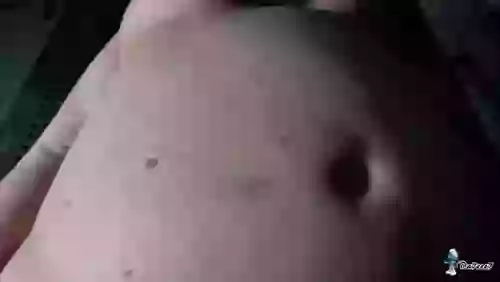


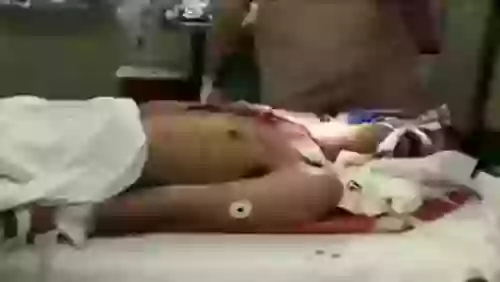

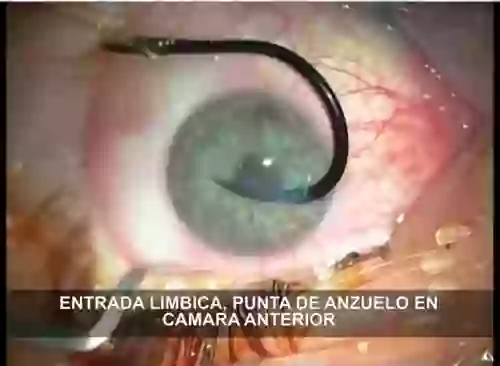
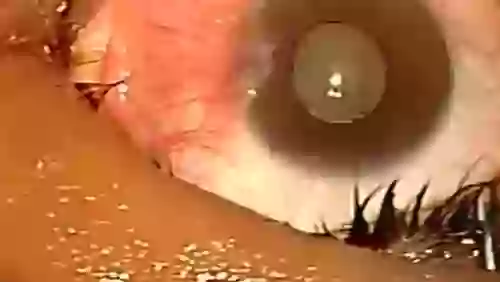



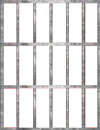


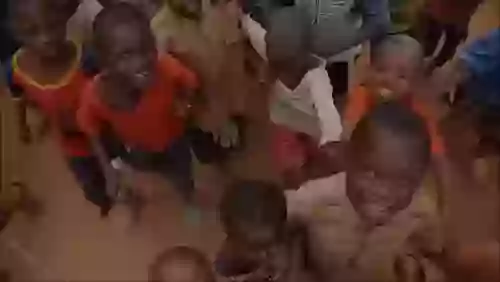



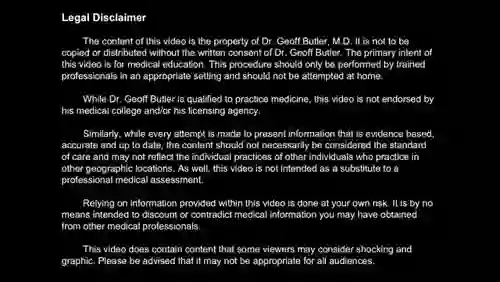
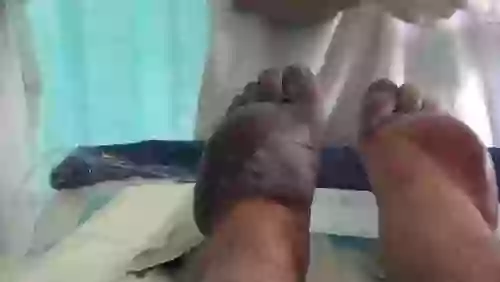
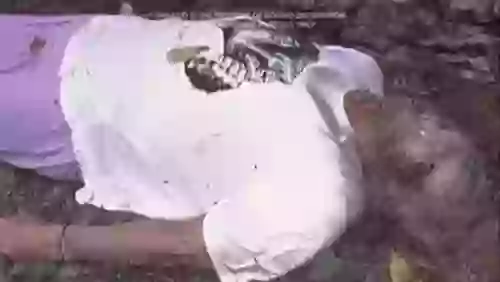
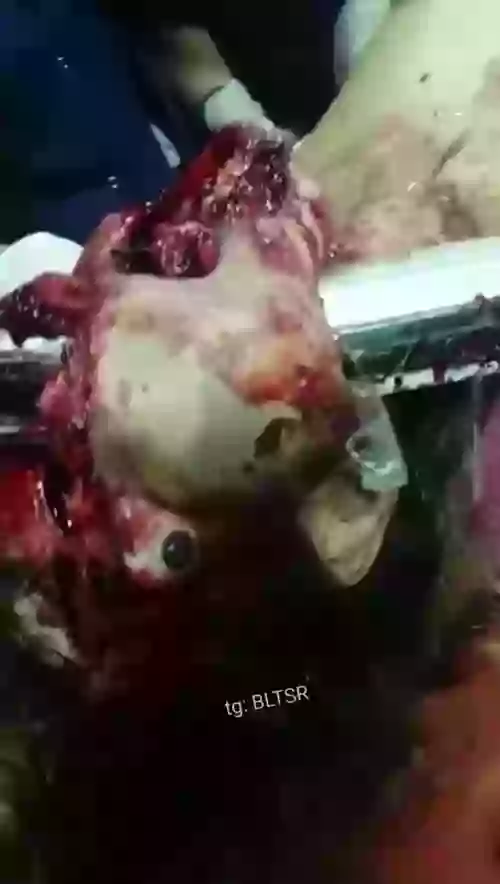

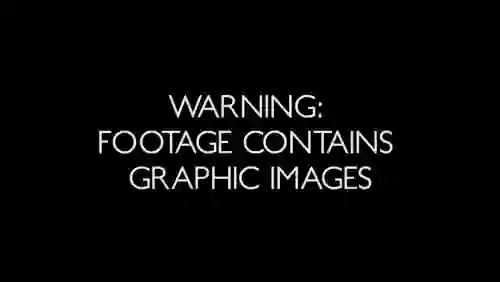


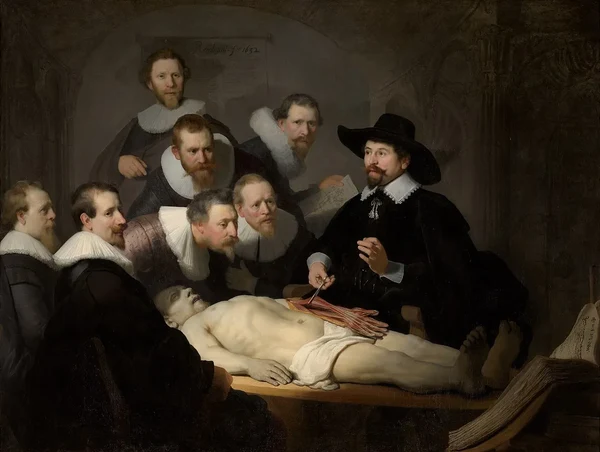

 Slavshit
Slavshit

 Sandshit
Sandshit
